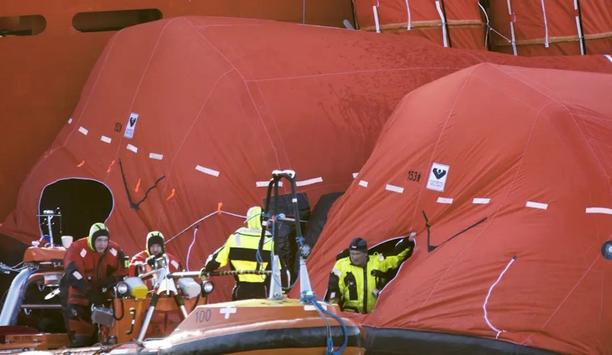The ceremony took place at the Enoura Plant of MHI's Shimonoseki Shipyard & Machinery Works in Yamaguchi Prefecture. The vessel, named "Koyo Maru", is scheduled for handover to Nippon Salvage in June 2024 following the completion of outfitting work and sea trials.
Order of extinguishing equipment
The vessel has a length overall (LOA) of 80.6 metres and a beam of 15.5 metres, with a gross tonnage of approximately 3,000. It will replace the current Koyo Maru, originally constructed at MHI's Shimonoseki Shipyard & Machinery Works, which has been in continuous service since 1998.
The new vessel has one of the highest pulling capacities (bollard pull) in Japan to respond to large-scale marine accidents, while optimal placement of fire extinguishing equipment such as water cannons, and improved fixed-point holding capacity, provides enhanced efficiency when firefighting on other ships.
SCR system
Koyo Maru is also equipped with a SCR system to comply with environmental regulations
The Koyo Maru is also equipped with a selective catalytic reduction (SCR) system to comply with environmental regulations, allowing it to operate in designated areas where nitrogen oxide (NOx) emissions are restricted, such as the coastal waters of the United States and Canada, the North Sea, and the Baltic Sea.
Further, the vessel utilises a new hull form (semi-vertical stem) to improve propulsion performance and has been designed to allow temporary equipment such as remotely operated vehicles (ROVs) to be mounted on the exposed deck as necessary, improving workability. Private rooms for supervisors have also been provided to improve liveability.
Solutions to the various societal issues
With the construction of this vessel, Mitsubishi Shipbuilding will contribute to the various salvage activities carried out in seas around the world, as well as environmental conservation.
In addition, by building vessels with excellent fuel efficiency and environmental performance, and that contribute to the safety of society, Mitsubishi Shipbuilding aims to provide solutions to the various societal issues facing its customers in Japan and overseas.
Comparison of the new and current Vessels
Ship type: Salvage tug, salvage tug
LOA: Approximately 80.6 m; approximately 86.08 m
Beam: Approximately 15.5 m; approximately 14.5 m
Gross tonnage: Approximately 3,000 t; approximately 2,474 t
Service speed: 14.5 knots; 16.5 knots










